Higashitani
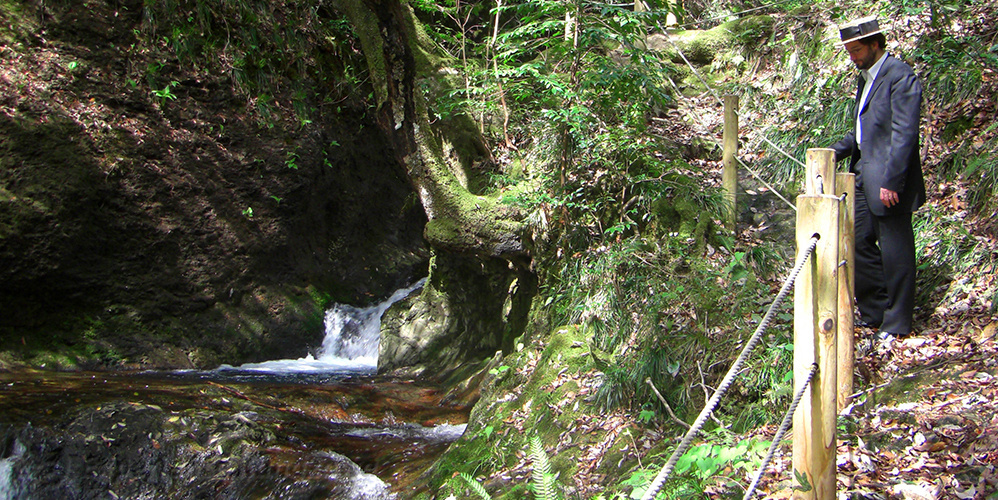
Catching sights of traditional Japanese life-style in the mountainous areas of Higashitani
Kaga City, in southern Ishikawa Prefecture, is set in between the Japan Sea coast and the nearly immediate rising hills and mountains, adorning Mt. Hakusan’s majesty. Echoing to the variety of Kaga’s coastal landscapes is the wide range of natural sceneries, especially when heading to the mountainside. Shortly before reaching Yamashiro Onsen, on the left side of the road when driving from the Natadera temple in south Komatsu, is the quiet valley of Higashitaniguchi. The locals praise this valley for retaining the clear waters from the surrounding mountains, hence producing some of the finest rice in the region. Passing the valley, meandering through the hills on the left is the remarkably beautiful road of the Higashitani villages.
By Alexandre Leroi Cortot; Published: March 30, 2011
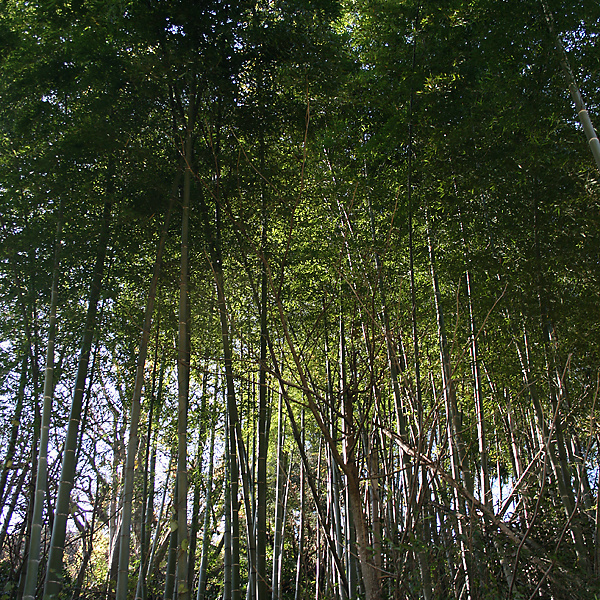
Verdant greens
of bamboos in summer
and infinite red shades
of maple’s foliage
in the fall
One great interest of the area is nature itself. The lush flora and vegetation along this route is worth admiring. Dominated by the blossoming of wild cheery trees in spring, verdant greens of bamboos in summer, infinite red shades of maple’s foliage in the fall, and abundant snow present during winter.
The natural setting, offering a wide range of beautiful sceneries such as blooming glens, cosy river banks, graceful waterfalls and sources, make this area a perfect place for hiking. One should particularly not miss the Tsurugadaki (crane) waterfall, a few hundred meters from the Aratani Shrine. It owes its name to the shape taken by the water, dropping off for some 60 meters and finally evoking the image of a white crane rising up from the ground.
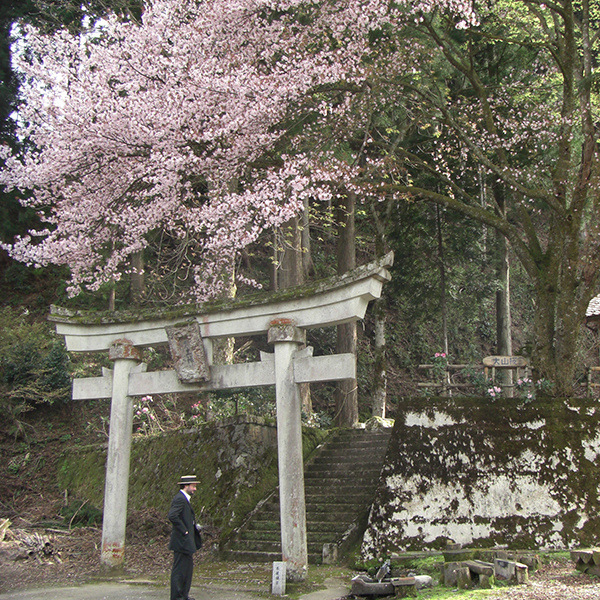
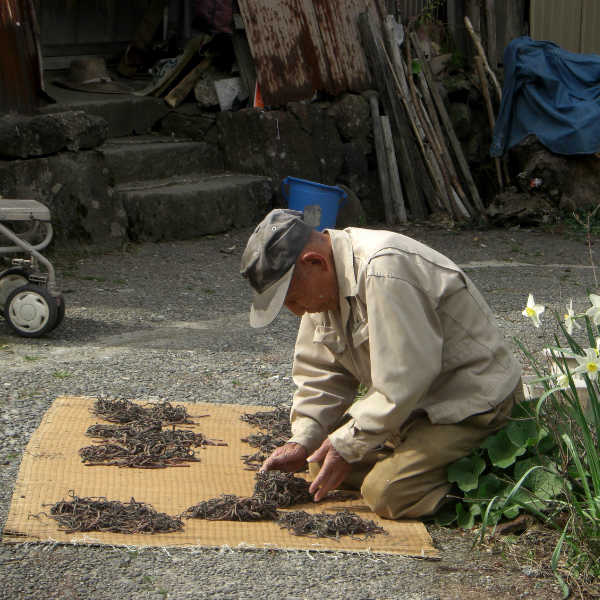
Walking through
these allaying sceneries,
one hardly thinks of
how demanding it was to live
in such remote places.
The other marvel of this road is that it offers a very instructive view of how the Japanese long lived in such mountainous areas.
Going through the four villages of the Higashitani area in order, we pass by Aratani, Imadachi, Suginomizu, and Ozuchi, the last two marking out the end of the road, these traditional houses have not changed so much during the past century.
Built in a highly traditional style, they are generally inhabited from March up to the edge of December, when the harshness of winter’s heavy snowing encourages the villagers to go and wait for the spring’s warmth down in the valley. But that was not always the case as the friendly people of Higashitani often tell. The houses were large enough to shelter extended families, gathering around the traditional hearth in the lobby, which is the core of every traditional Japanese house. Walking through these allaying sceneries, one hardly thinks of how demanding it was to live in such remote places. Cold snowy winters and wandering bears and boars damaging the fields, such things remain through the words from locals. But this is how it was. Some people from Higashitani used to and still live as the seasons dictate, getting their vegetables from the fields and taking their fresh water directly from the mountain sources. Until a few decades ago, children would also go to school, as shown on photographs in the town meeting halls…
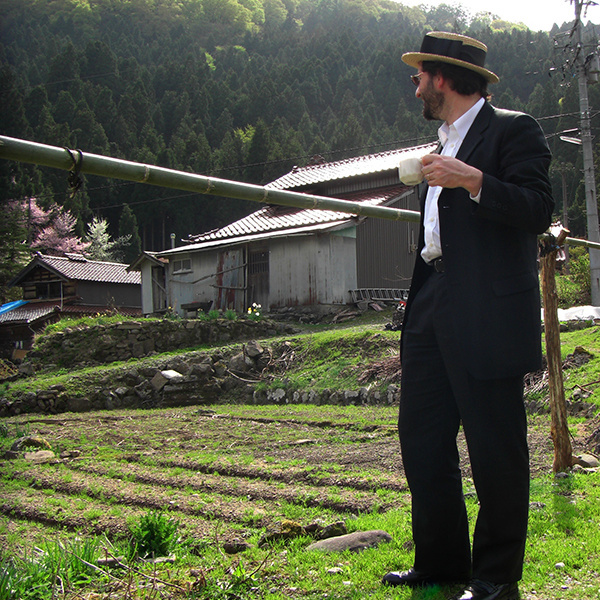
By the blissful feelings
of harmony they provide,
anyone who likes
to consider himself as being
really just part of nature
The quick modernization of Japan has increasingly taken its people out of this ancestral way of living close to natural cycles in order to adopt more convenient lifestyles. The perched villages of Higashitani, and its great natural site, are perceptive yet enchanting reminders of previous times that even Japanese people have started to forget.
By the blissful feelings of harmony they provide, anyone who likes to consider himself as being really just part of nature is sure to come across a rich and peaceful experience when discovering the nature in Higashitani. Such a welcome and necessary experience is what truly matches people and their natural surroundings, although nowadays it seems that these traditions are only known to the modern person through movies and role playing games.
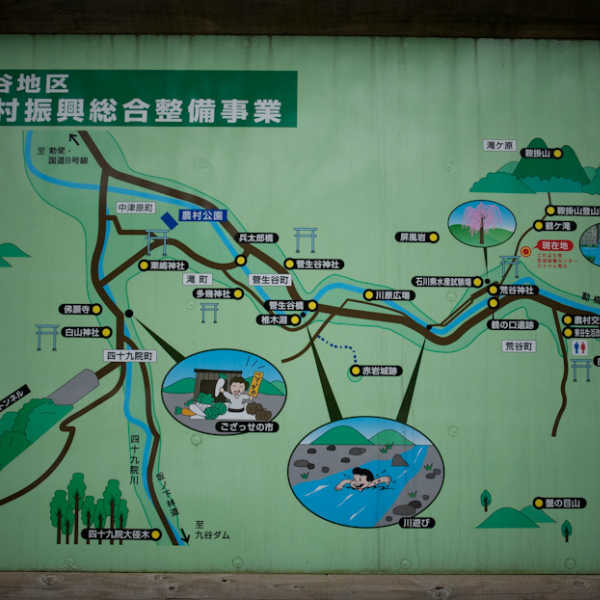

Verdant greens of bamboos in summer and infinite red
shades of maple’s foliage in the fall
One great interest of the area is nature itself. The lush flora and vegetation along this route is worth admiring. Dominated by the blossoming of wild cheery trees in spring, verdant greens of bamboos in summer, infinite red shades of maple’s foliage in the fall, and abundant snow present during winter.
The natural setting, offering a wide range of beautiful sceneries such as blooming glens, cosy river banks, graceful waterfalls and sources, make this area a perfect place for hiking. One should particularly not miss the Tsurugadaki (crane) waterfall, a few hundred meters from the Aratani Shrine. It owes its name to the shape taken by the water, dropping off for some 60 meters and finally evoking the image of a white crane rising up from the ground.


Walking through these allaying sceneries, one hardly thinks of how demanding it was to live in such remote places.
The other marvel of this road is that it offers a very instructive view of how the Japanese long lived in such mountainous areas.
Going through the four villages of the Higashitani area in order, we pass by Aratani, Imadachi, Suginomizu, and Ozuchi, the last two marking out the end of the road, these traditional houses have not changed so much during the past century.
Built in a highly traditional style, they are generally inhabited from March up to the edge of December, when the harshness of winter’s heavy snowing encourages the villagers to go and wait for the spring’s warmth down in the valley. But that was not always the case as the friendly people of Higashitani often tell. The houses were large enough to shelter extended families, gathering around the traditional hearth in the lobby, which is the core of every traditional Japanese house. Walking through these allaying sceneries, one hardly thinks of how demanding it was to live in such remote places. Cold snowy winters and wandering bears and boars damaging the fields, such things remain through the words from locals. But this is how it was. Some people from Higashitani used to and still live as the seasons dictate, getting their vegetables from the fields and taking their fresh water directly from the mountain sources. Until a few decades ago, children would also go to school, as shown on photographs in the town meeting halls…

By the blissful feelings of harmony they provide, anyone who likes to consider himself as being really just part of nature
The quick modernization of Japan has increasingly taken its people out of this ancestral way of living close to natural cycles in order to adopt more convenient lifestyles. The perched villages of Higashitani, and its great natural site, are perceptive yet enchanting reminders of previous times that even Japanese people have started to forget.
By the blissful feelings of harmony they provide, anyone who likes to consider himself as being really just part of nature is sure to come across a rich and peaceful experience when discovering the nature in Higashitani. Such a welcome and necessary experience is what truly matches people and their natural surroundings, although nowadays it seems that these traditions are only known to the modern person through movies and role playing games.

Aratani-Jinja Shrine / Ni-58, Aratani-Machi, Yamanaka-Onsen, Kaga City
Kanazawa Area
Kenrokuenn Garden
Following Matsuo Bashô’s steps in Ishikawa - 1/6 [Introduction]
Following Matsuo Bashô’s steps in Ishikawa - 2/6 [Kanazawa]
Noto Area
Mitsukejima Island
Kaga Area
Following Matsuo Bashô’s steps in Ishikawa - 3/6 [Komatsu City]
Following Matsuo Bashô’s steps in Ishikawa - 4/6 [Natadera Temple]
Following Matsuo Bashô’s steps in Ishikawa - 5/6 [Yamanaka Onsen Town]
Following Matsuo Bashô’s steps in Ishikawa - 6/6 [Daishoji District]
Rosanjin in Yamashiro Onsen Town
Stroll Kanazawa in Rental Kimono - 1/2 [Kimono Rental]
Stroll Kanazawa in Rental Kimono - 2/2 [Kimono Stroll]
January
Enyukai: Geisha Party
February
Setsubun-Sai Festival
AUGUST
Issaki Hoh-Toh Matsuri
November
Enyukai: Geisha Party

